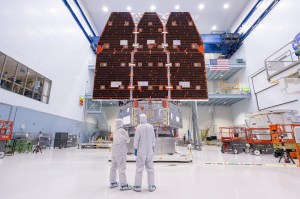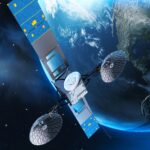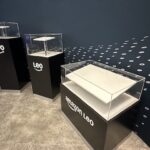Now Reading: Sierra Nevada Corporation’s Dream Chaser Advances Toward 2026 Orbital Launch Despite Challenges
-
01
Sierra Nevada Corporation’s Dream Chaser Advances Toward 2026 Orbital Launch Despite Challenges
Sierra Nevada Corporation’s Dream Chaser Advances Toward 2026 Orbital Launch Despite Challenges


Sierra Nevada Corporation’s Dream Chaser, an ambitious spaceplane reminiscent of NASA’s now-retired shuttle, is forging ahead with significant advancements despite a somewhat ambiguous future. The company aims to launch its uncrewed cargo vehicle, Tenacity, into low Earth orbit in the fourth quarter of 2026.
In an update provided to NASASpaceflight.com, Sierra Space confirmed it’s making progress on Tenacity’s development. Key technical achievements thus far include completing the assembly of its electrical systems, along with successful electromagnetic interference and compatibility tests conducted at NASA’s Kennedy Space Center.
These essential tests were undertaken at the Space Systems Processing Facility at Kennedy, where images exclusively acquired by NSF showcased the Dream Chaser alongside its associated Shooting Star cargo module. A press release from Sierra Space detailed ongoing evaluations of the vehicle’s communication systems, which are transmitting telemetry and command distribution between the spacecraft and mission control located in Louisville, Colorado. This testing used NASA’s Tracking Data and Relay Satellite System, a network of satellites that supports communications for low and medium Earth orbit.
Dream Chaser’s journey has not been without its challenges. Originally acquired by Sierra Nevada Corporation in 2008 for NASA’s Commercial Crew Development program, Dream Chaser was initially well-positioned but was ultimately overlooked in favor of SpaceX’s Crew Dragon and Boeing’s Starliner in 2014. Despite a protest filed with the U.S. Government Accountability Office, the company was unable to overturn the decision.
In a shift of focus, Dream Chaser was later chosen for NASA’s Commercial Resupply Services 2 (CRS-2) contract, granting it seven resupply missions to the International Space Station, with the first originally slated for 2021 but postponed several times. However, recent changes to the contract have eliminated this guaranteed flight requirement and shifted Tenacity’s first mission to a free-flying orbital test.
Looking beyond the ISS, Sierra Space has indicated it is exploring the potential of Dream Chaser as a national asset, in consultation with various stakeholders. The revisions to the contract have highlighted the vehicle’s capabilities for a range of mission profiles, which may include addressing emerging national security challenges.
The inaugural flight is expected to return to Earth at Vandenberg Space Force Base in California, diverging from earlier plans for landing at the Launch and Landing Facility in Florida. Testing at the Kennedy Space Center continues, with recent tow tests simulating the autonomous landing dynamics of the vehicle. This involved a Freightliner truck towing Tenacity at high speeds to validate key navigational parameters.
Despite concerns about potential propulsion system issues, Sierra Space remains confident in the integrity of their thruster technology. The company stated its Tri-mode thrusters have undergone rigorous qualification tests at their facility in Wisconsin, successfully meeting a range of stringent safety and performance standards. A critical on-vehicle integrated hot-fire test is still to be completed.
Hints of uncertainty surround a second Dream Chaser vehicle, named Reverence, which is currently in production limbo as the company’s focus remains on ensuring the success of Tenacity’s mission. Future developments for Reverence will depend on demand from prospective customers.
Upcoming for Tenacity are crucial hot-fire tests, integrated hardware/software assessments, and further acoustic testing scheduled for December 2025. Sierra Space has expressed confidence in its team and the vehicle’s readiness for the modified mission profile, stating that they have prepared extensively for all phases of the mission, including the free-flight elements. The focus now is on refining their flight plan and ensuring the simulation exercises align with the new operational requirements.
Stay Informed With the Latest & Most Important News
Previous Post
Next Post
-
 012024 in Review: Highlights from NASA in Silicon Valley
012024 in Review: Highlights from NASA in Silicon Valley -
 02Panasonic Leica Summilux DG 15mm f/1.7 ASPH review
02Panasonic Leica Summilux DG 15mm f/1.7 ASPH review -
 03From Polymerization-Enabled Folding and Assembly to Chemical Evolution: Key Processes for Emergence of Functional Polymers in the Origin of Life
03From Polymerization-Enabled Folding and Assembly to Chemical Evolution: Key Processes for Emergence of Functional Polymers in the Origin of Life -
 04How New NASA, India Earth Satellite NISAR Will See Earth
04How New NASA, India Earth Satellite NISAR Will See Earth -
 05And Thus Begins A New Year For Life On Earth
05And Thus Begins A New Year For Life On Earth -
 06Astronomy Activation Ambassadors: A New Era
06Astronomy Activation Ambassadors: A New Era -
07SpaceX launch surge helps set new global launch record in 2024




















